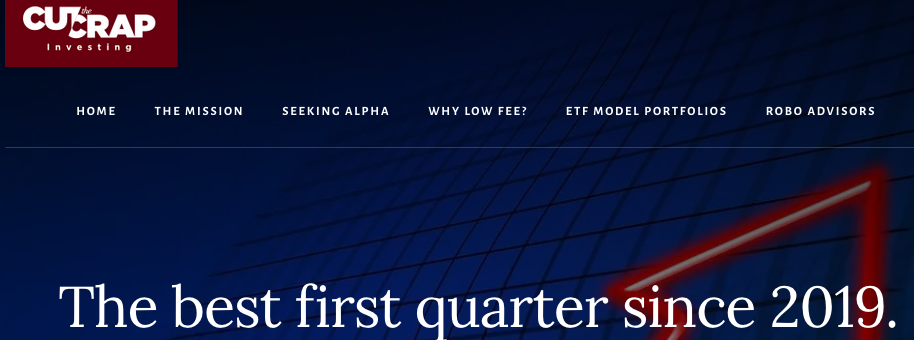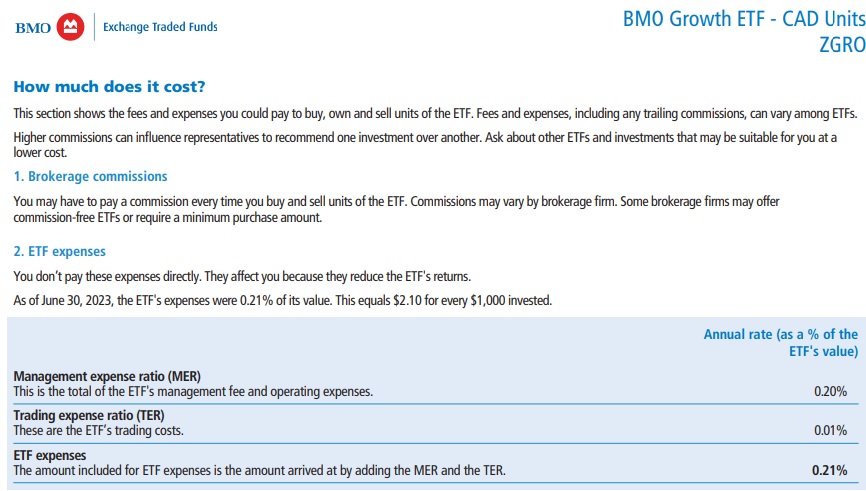By Dale Roberts
Special to Financial Independence Hub
It was a wonderful quarter for U.S. stocks. In fact, the S&P 500 index rose 10.2% during the first three months of the year, its best first-quarter performance since 2019. The Dow Jones Industrial Average and the Nasdaq Composite gained 5.6% and 9.1%, respectively. Canadian and International stocks also pitched in with a strong quarter. Given that, balanced portfolios of all stripes are rewarding patient investors. A global equity portfolio (XEQT) delivered 9.6%. It’s the best first quarter since 2019 on the Sunday Reads.
U.S. stocks had their best first quarter since 2019.
Looking for that soft economic landing
While the stock market saw intermittent sell-offs, it continued marching higher as robust corporate earnings and a strong labor market renewed hopes that the economy will avoid a recession.
The S&P 500 on Thursday logged its 22nd record-high close of the year. The first 17 were recorded during the first 50 tading days of 2024, the largest tally during that period since 1998, according to Bespoke Investment Research.
Companies in the S&P 500 saw earnings grow 4.3% during the fourth quarter of 2023 from the prior year, according to FactSet data. Analysts polled by FactSet expect S&P 500 earnings to grow by more than 10% for all of 2024.
Let the good times roll?
In another positive sign for markets, history suggests that new highs at the beginning of the year often portend positive annual returns. The S&P 500 has seen an average 15.8% return in years that it notched new highs in January and February, in contrast to an average 9.2% gain for all years, according to CFRA Research data going back to 1954.
I like this quote that I read on Seeking Alpha …
All manner of genius is presently simply embarrassed by the market’s failure to stop going up.
Alex King – Cestrian Capital
Every sector (except real estate) offered gains in the first quarter.
And momentum is a powerful force. Of course past performance and trends are not guaranteed to repeat. But just for fun, have a look at this table.

While markets mostly go up, the chances of them going up are at a higher level in 2024. Of course that’s no reason to adjust your strategy. We adopt a simple investment plan and stick to it like glue. As I wrote a few months ago …
The watiting is the hardest part. We set the table for the next robust upturn, or three.
A nice mix of top performers
Our top performers for the quarter are a mix of Canadian energy stocks, tech and some defensives. Bitcoin leads the way.

Canadian stocks are helping out
Canadian stocks also had a solid first quarter with iShares TSX 60 (XIU) up 6.0%. That was the headline in last week’s Sunday Reads – Canadian stocks are better than you think.
And a report on Thursday offers hope that the Canadian economy still might have a pulse after many quarters of population-adjusted negative growth (aka recession).
This week I updated the post that looks at the BMO Low Volatility ETF – ZLB. That may be the best core Canadian ETF. I also compared that wonderful market-beating ETF to the Canadian Wide Moat portfolio.
And here’s a post on the move out of high fee Canadian mutual funds. More Canadians are making the sensible shift to ETF portfolios and building stock portfolios. But it’s not fast enough. There’s still $2 trillion in mutual funds, most of those funds being high-fee and very poor performing. The opportunity costs is just tremendous. Please share this blog with friends and family stuck in ‘the old way’ to invest. Continue Reading…







